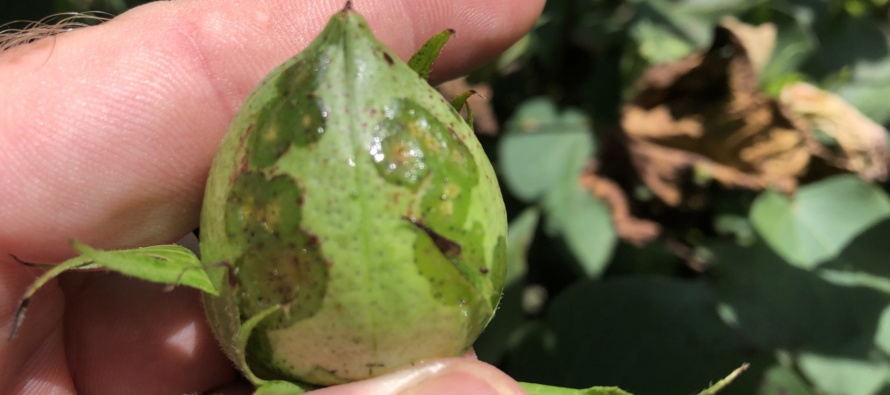2019: Response of Cotton Varieties to Inoculation with Xanthomonas citri pv. malvacearum, the Causal Organism of Bacterial Blight

Related Articles
- 2010 Soybean And Corn Variety Trial Data 3
- Rice Variety Trial Results For 2010, Plus Rice Research Report 0
- Evaluation of Peanut Varieties in Mississippi, 2010 0
Latest Tweets
During 2019, two sets of the cotton varieties (52 entries) contained in the Mississippi State University Official Variety Trial were planted in Stoneville. At flowering (7/19/2019), plants were inoculated with a bacterial suspension that contained the bacterium that causes bacterial blight (Xanthomonas citri pv. malvacearum). Plots were inoculated in 15 gallons of water/Acre. Following inoculation, plots were observed for the presence of bacterial blight on two separate occasions (17 and 30 days post-inoculation). The results contained in the attached table (below) were based on the last observations made August 18, 2019. Plots were evaluated using a percent scale (0-100%) for the incidence (percentage of leaves exhibiting symptoms), severity (percentage of the leaf surface area exhibiting symptoms) and for defoliation (0-100% of each plot) as a result of bacterial blight. Eight total replicate plots of each variety were evaluated, four receiving inoculum (inoculated) and four that did not receive inoculum (non-inoculated). A response was assigned for each variety based on the values outlined below and the specific visual response to the bacterium.
Responses were assigned using a letter designation based on the numerical incidence response within a given range. Responses are defined as:
S = susceptible
MS = moderately susceptible
MR = moderately resistant
R = resistant
No plot or variety exhibited an incidence of bacterial blight greater than 60% (observationally). In all, the breakdown of variety responses within the OVT were: S = 35% of the entries, MS = 4% of the entries, MR = 4% of the entries, and R = 58% of the entries.





Let me tell You a sad story ! There are no comments yet, but You can be first one to comment this article.
Write a comment